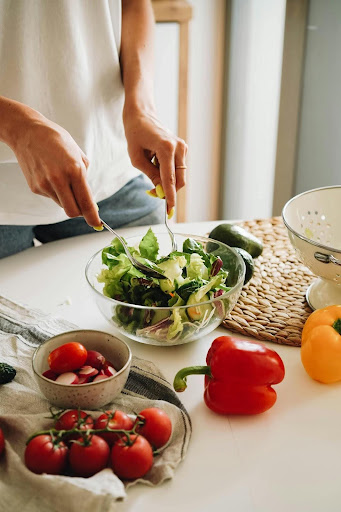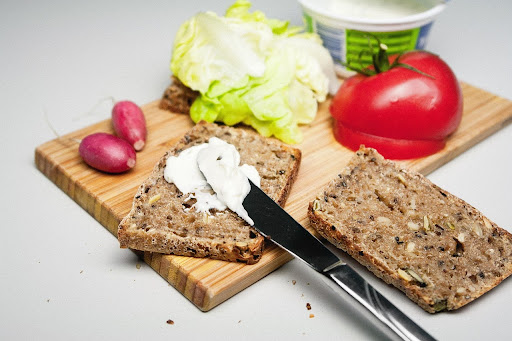Meal prep doesn’t have to mean complicated recipes, hours of chopping, or expensive grocery runs. In reality, some of the best meal prep strategies begin right at home, making use of the ingredients that are already sitting in your pantry, fridge, and freezer. By taking a little time to organize what you have, plan flexible meals, and get creative with leftovers, you can save money, reduce waste, and ensure that there’s always something satisfying to eat.
This guide explores practical ways to make meal prepping easier and more enjoyable. Whether you are a busy professional, a parent juggling responsibilities, or someone simply trying to eat healthier, these strategies will help you streamline the process and reduce stress around mealtimes. “For those who find traditional meal prep challenging due to time constraints or dietary needs, ready-to-eat gourmet meals can be a game-changer, offering convenience without compromising on quality or specific requirements like Zabihah halal,” say Experts from COOKT. One of the most common roadblocks to meal prep is the belief that it requires a massive shopping trip or complex recipes. The truth is that most households already have the basics needed to prepare balanced meals.

Tools and Resources to Simplify Meal Prep
One of the most common roadblocks to meal prep is the belief that it requires a massive shopping trip or complex recipes. The truth is that most households already have the basics needed to prepare balanced meals. What’s often missing is a system for bringing those ingredients together in a thoughtful way.
This is where digital tools can make a big difference. A free batch freezer meal planner, which takes the guesswork out of planning, is an excellent starting point. Just input the ingredients you already have on hand, and it generates ideas for meals that fit. This approach is particularly useful for families that want to avoid food waste. Beyond digital tools, physical items such as airtight containers, freezer bags, mason jars, and appliances like slow cookers or pressure cookers make storing and cooking meals much easier. Together, these resources transform meal prep from a chore into a routine that feels manageable.
Know What You Have
Before diving into cooking, it’s important to take stock of your kitchen. Start by checking your pantry for staples like rice, beans, pasta, canned goods, and broth. Then move on to the fridge and freezer, where you may find proteins, dairy items, or produce nearing expiration. This inventory-first approach prevents unnecessary purchases, helps you build meals around items that need to be used soon, and sparks creativity by encouraging combinations you may not have considered otherwise.
A half-bag of frozen vegetables, leftover shredded chicken, and a box of rice can easily become a quick stir-fry or fried rice dish. By working with what you already have, you cut down on waste and maximize efficiency, all while learning to be more inventive in the kitchen.
Create a Mix-and-Match Menu
Instead of following rigid meal plans, think about preparing meal components that can be mixed and matched throughout the week. Cooking a few proteins, grains, and vegetables ahead of time allows you to build different meals without starting from scratch each day. Roasted chicken could be served with rice and vegetables for dinner one night, added to a salad the next day, and turned into a sandwich later in the week.
The goal is to create versatile building blocks rather than finished meals that limit flexibility. By keeping sauces and condiments on hand, you can easily transform the flavor profile of a dish and keep your weekly menu interesting.
Batch Cooking and Freezing for Later
Cooking in larger portions is one of the simplest ways to prepare meals in advance. Instead of cooking for just one evening, double the recipe and freeze half. This works well with soups, stews, casseroles, and curries. The freezer becomes your backup pantry, stocked with ready-made meals for busy nights.
Labeling containers with the name of the dish and the date it was made is crucial. This prevents confusion and ensures you rotate older meals to the front. Having a freezer filled with neatly labeled meals means you are never caught off guard, even when life gets hectic. It saves money by allowing you to buy ingredients in bulk and reduce the need for last-minute takeout.
Repurposing Leftovers Creatively
Meal prep doesn’t mean eating the same thing over and over again. With a little creativity, leftovers can be turned into entirely new dishes. Roast chicken, for example, can be repurposed into chicken salad for lunch, transformed into tacos for dinner, or simmered with rice and vegetables for a comforting soup. Grilled vegetables can be used as toppings for sandwiches, blended into pasta dishes, or added to omelets. Even something as simple as leftover rice can be reimagined as fried rice, stuffed peppers, or a base for curry.
Repurposing leftovers keeps meals interesting and reduces the monotony that often leads people to abandon meal prepping altogether. It cuts down on waste, ensuring every ingredient is stretched as far as possible.
Quick Pantry-Friendly Meals
Sometimes the best meal prep ideas come from pantry staples. Pasta combined with canned tomatoes and beans can quickly become a hearty, filling dinner. Tuna or chickpeas can be mixed with mayonnaise or Greek yogurt for an easy salad that works as a sandwich filling or a wrap. A bag of lentils simmered with broth and vegetables can create a satisfying one-pot meal. Even breakfast can be prepped ahead by soaking oats overnight with fruit and yogurt for grab-and-go options.
These simple dishes demonstrate that you don’t always need to stock up on fresh groceries to make meals that are both nourishing and enjoyable.
Snack and Breakfast Prep
Meal prepping isn’t just about lunches and dinners. Preparing snacks and breakfasts ahead of time can help keep energy levels steady and prevent unhealthy choices throughout the day. Hard-boiled eggs, yogurt parfaits, or jars of overnight oats are easy to prepare in batches and store in the fridge. Chopping fruits and vegetables ahead of time ensures quick, healthy snacks are always available, while homemade energy bites provide portable fuel for busy days.
By incorporating snacks and breakfasts into your meal prep routine, you create a well-rounded system that supports healthy eating from morning to night.

Meal prepping doesn’t need to feel like a burden. By focusing on what’s already in your kitchen, organizing ingredients, and creating versatile building blocks, you can save time, money, and energy while enjoying healthier meals. From batch cooking and freezer storage to creatively repurposing leftovers, small adjustments can completely change your daily routine.
The ultimate benefit of meal prep is freedom, the freedom to eat well without the stress of daily cooking, the freedom to avoid waste, and the freedom to enjoy nutritious food that supports your lifestyle. With a little planning and creativity, meal prepping becomes less about rigid rules and more about flexibility, convenience, and the simple joy of sharing good food.